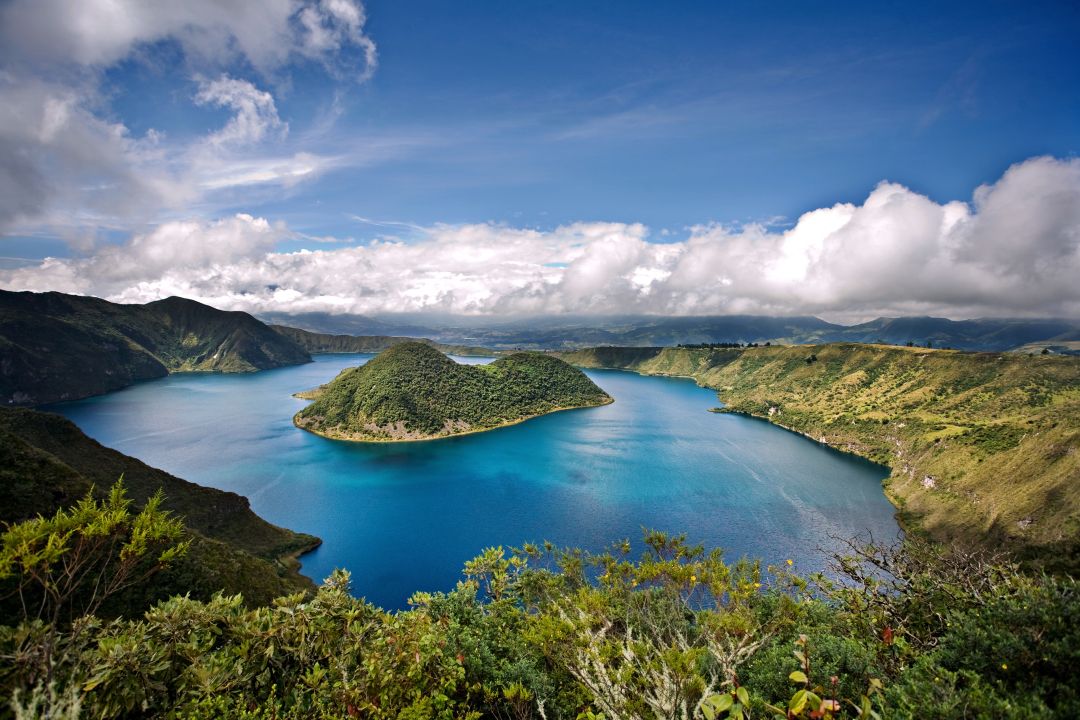Table of Contents
1. Introduction: Why Visit the Galápagos Islands
The Galápagos Islands of Ecuador are one of the most extraordinary places on Earth. Known as the “Enchanted Islands,” they inspired Charles Darwin’s theory of evolution and remain a living laboratory of biodiversity. A trip here is unlike anywhere else—where giant tortoises roam freely, marine iguanas bask on volcanic rocks, and sea lions play beside you while snorkeling.
2. Where Are the Galápagos Islands?
Located 600 miles (965 km) off Ecuador’s Pacific coast, the Galápagos archipelago consists of 13 main islands, 6 smaller islands, and over 100 islets and rocks.
3. History of the Galápagos Islands
1535: Discovered by accident by Fray Tomás de Berlanga.
1835: Charles Darwin’s famous expedition aboard HMS Beagle.
1959: Declared a national park by Ecuador.
1978: Named a UNESCO World Heritage Site.
4. UNESCO World Heritage and Global Importance
The Galápagos Islands are one of the most protected ecosystems in the world, with strict visitor regulations to preserve unique biodiversity.
5. Wildlife in the Galápagos
The islands are home to species found nowhere else in the world.
Giant Tortoises: Live over 100 years, iconic symbol of the islands.
Marine Iguanas: The only lizards that swim in the ocean.
Sea Lions: Playful companions for swimmers.
Blue-Footed Boobies: Famous for their bright blue feet and mating dance.
Galápagos Penguins: The only penguin species found north of the equator.
6. Marine Life of the Galápagos
The Galápagos is a paradise for divers and snorkelers. You’ll find manta rays, hammerhead sharks, dolphins, sea turtles, and vibrant coral reefs.
7. Best Time to Visit the Galápagos
December–May: Warm, calm seas, best for snorkeling and beach lovers.
June–November: Cooler waters, rich marine life, ideal for diving.
8. How to Get to the Galápagos from Mainland Ecuador
Fly from Quito or Guayaquil to Baltra Island (Santa Cruz) or San Cristóbal Island.
Flights take about 2–3 hours.
9. Top Islands to Visit
Santa Cruz
Hub for travelers.
Charles Darwin Research Station.
Tortuga Bay beach.
Isabela
Largest island.
Sierra Negra Volcano.
Flamingo lagoons.
San Cristóbal
Interpretation Center.
Sea lion colonies.
Surfing at Punta Carola.
Española
Best place to see albatrosses.
Gardner Bay beach.
Floreana
Post Office Bay (historic mail drop).
Black sand beaches.
10. Things to Do in the Galápagos
Snorkeling & Diving: Swim with sharks, turtles, and sea lions.
Hiking: Volcanic landscapes and lava tunnels.
Kayaking: Explore coastal waters.
Wildlife Photography: Capture unique species.
11. Galápagos Cruises vs. Land-Based Tours
Cruises: Allow access to remote islands, guided by naturalists.
Land-Based Tours: Stay on main islands, take day trips, more budget-friendly.
12. Accommodation Options in the Galápagos
Budget: Hostels and eco-lodges.
Mid-range: Boutique hotels.
Luxury: All-inclusive lodges and yacht accommodations.
13. Food and Cuisine in the Galápagos
Fresh seafood dominates.
Try ceviche, grilled fish, lobster, and plantain dishes.
Ecuadorian specialties like encebollado (fish stew) are common.
14. Culture and Local Communities
Though small, the islands have vibrant communities. Locals focus on fishing, tourism, and conservation.
15. Eco-Tourism and Sustainability
Strict rules are in place:
Only travel with licensed guides.
No touching or feeding animals.
Leave no trace—plastic bans are enforced.
16. Travel Costs and Budget Guide
Budget travelers: $100–$150/day.
Mid-range travelers: $200–$400/day.
Luxury travelers: $500+/day.
Cruises typically cost $1,500–$5,000 per week depending on comfort level.
17. Packing List for Galápagos Travel
Lightweight clothing and swimwear.
Sun protection (reef-safe sunscreen, hat, sunglasses).
Snorkel gear (optional, often provided).
Waterproof dry bag.
Hiking shoes and sandals.
18. Safety and Responsible Tourism
Always follow park rules.
Bring seasickness medication for cruises.
Avoid single-use plastics.
Respect wildlife distances.
19. Sample Itineraries
5-Day Trip
Day 1: Arrive Santa Cruz, Tortuga Bay.
Day 2: Darwin Station + snorkeling.
Day 3: Day trip to Bartolomé Island.
Day 4: Isabela Island volcano hike.
Day 5: Return to Quito/Guayaquil.
7-Day Trip
Includes Santa Cruz, Isabela, and San Cristóbal with day trips to Española.
10-Day Trip
Combination of cruise + land-based tour covering multiple islands.
Conclusion
The Galápagos Islands in Ecuador are a once-in-a-lifetime destination. With unmatched biodiversity, pristine landscapes, and a strong commitment to conservation, the islands are a model for sustainable travel. Whether you choose a luxury cruise or a budget-friendly island-hopping adventure, a trip to the Galápagos will leave you with memories that last forever.
FAQs About Ecuador Galápagos
Q1. Where are the Galápagos Islands located?
They are about 600 miles (965 km) off the coast of Ecuador in the Pacific Ocean.
Q2. Do I need a visa to visit the Galápagos?
Most travelers only need an Ecuador visa (depending on nationality). The Galápagos requires an entry permit fee.
Q3. How much does a trip to the Galápagos cost?
Budget travelers spend $100–$150/day; cruises cost $1,500–$5,000 per week.
Q4. What is the best time to visit the Galápagos?
December–May for warm, calm seas; June–November for rich marine life and diving.
Q5. What wildlife can I see in the Galápagos?
Giant tortoises, marine iguanas, sea lions, blue-footed boobies, penguins, and more.
Q6. Can I travel to the Galápagos without a cruise?
Yes, you can stay on main islands (Santa Cruz, San Cristóbal, Isabela) and take day tours.
Q7. Is it safe to visit the Galápagos?
Yes, it is very safe with strict environmental regulations and guides.
Q8. Why are the Galápagos Islands famous?
They inspired Charles Darwin’s theory of evolution and host unique wildlife found nowhere else.











